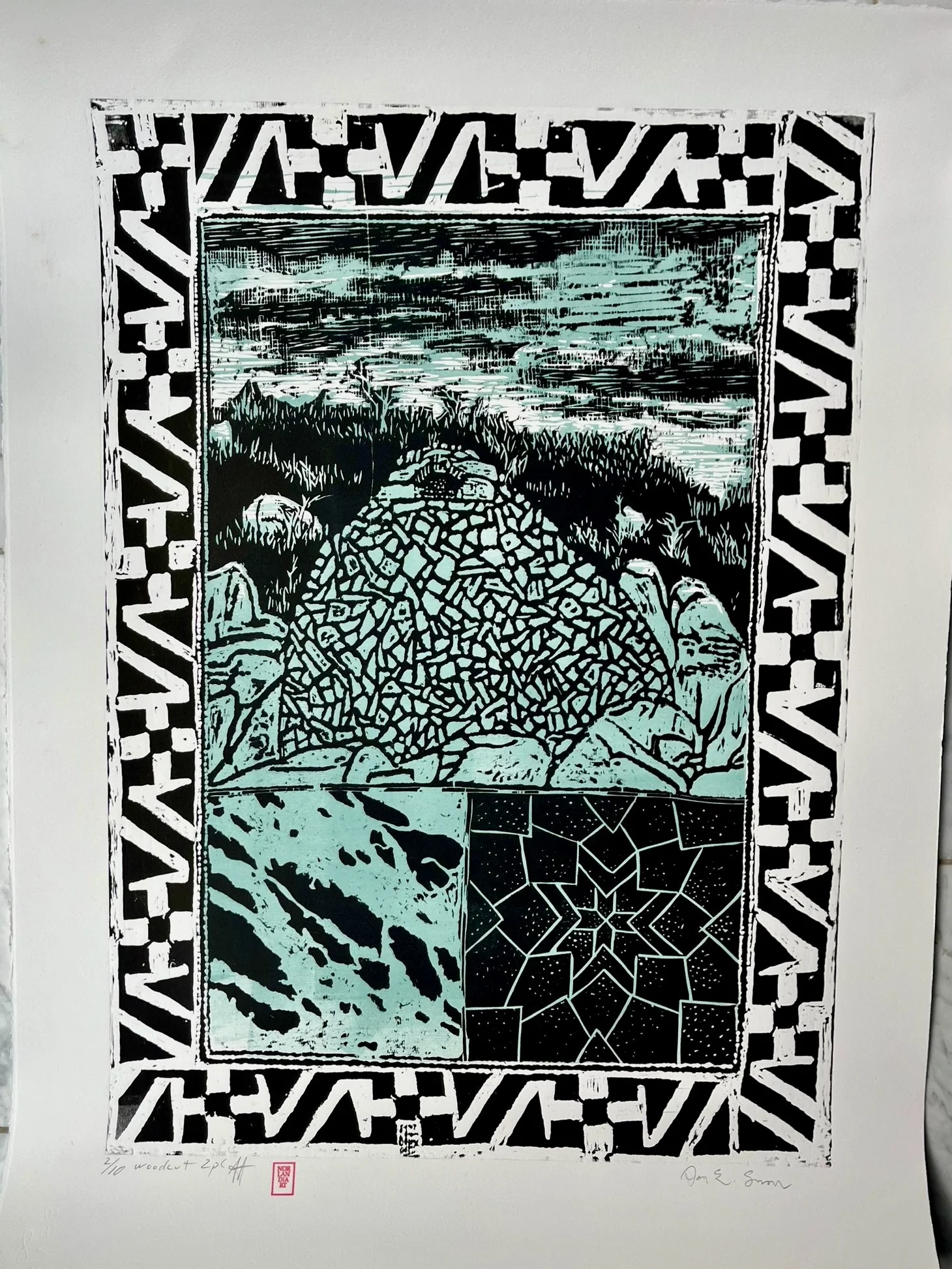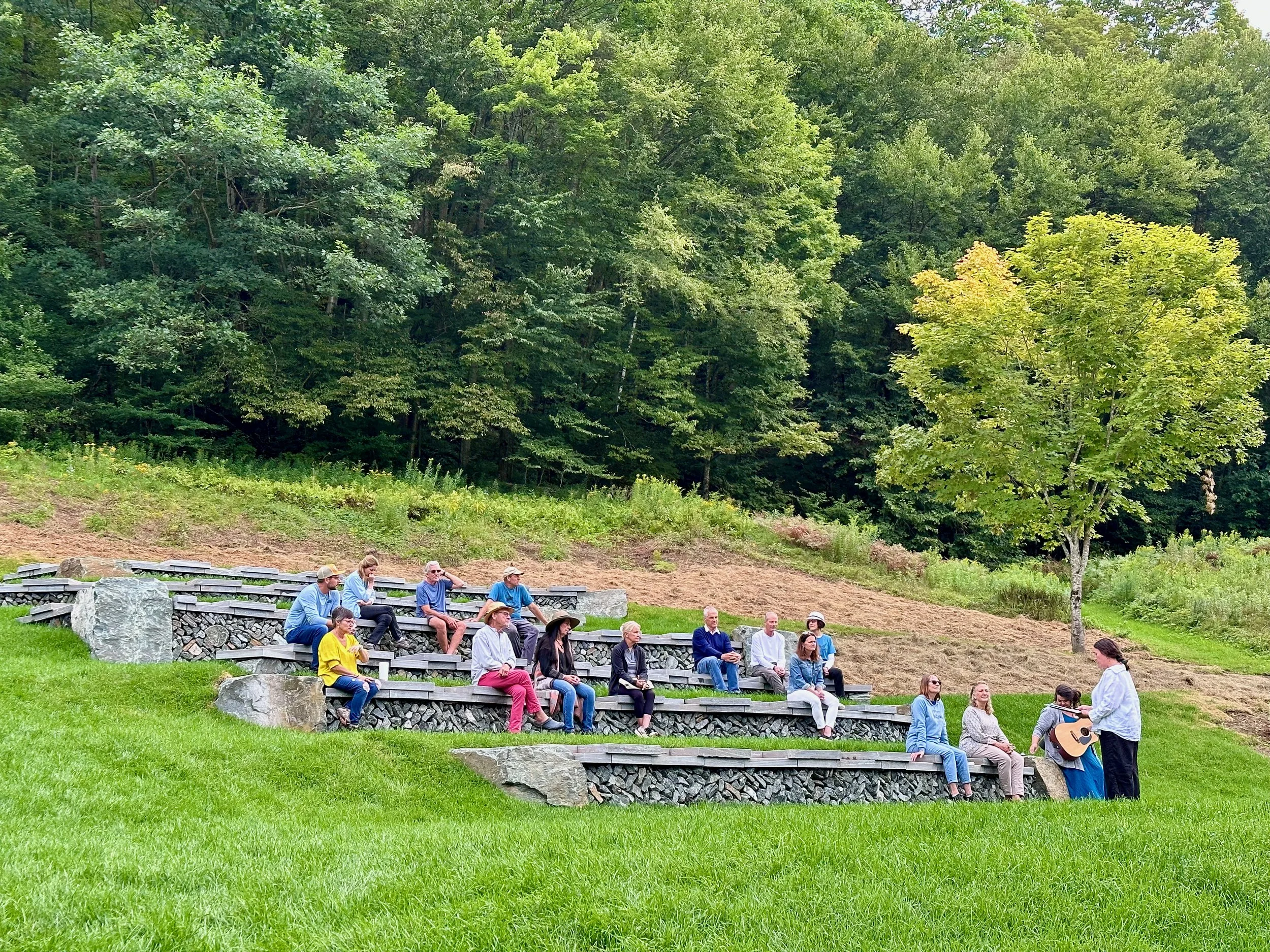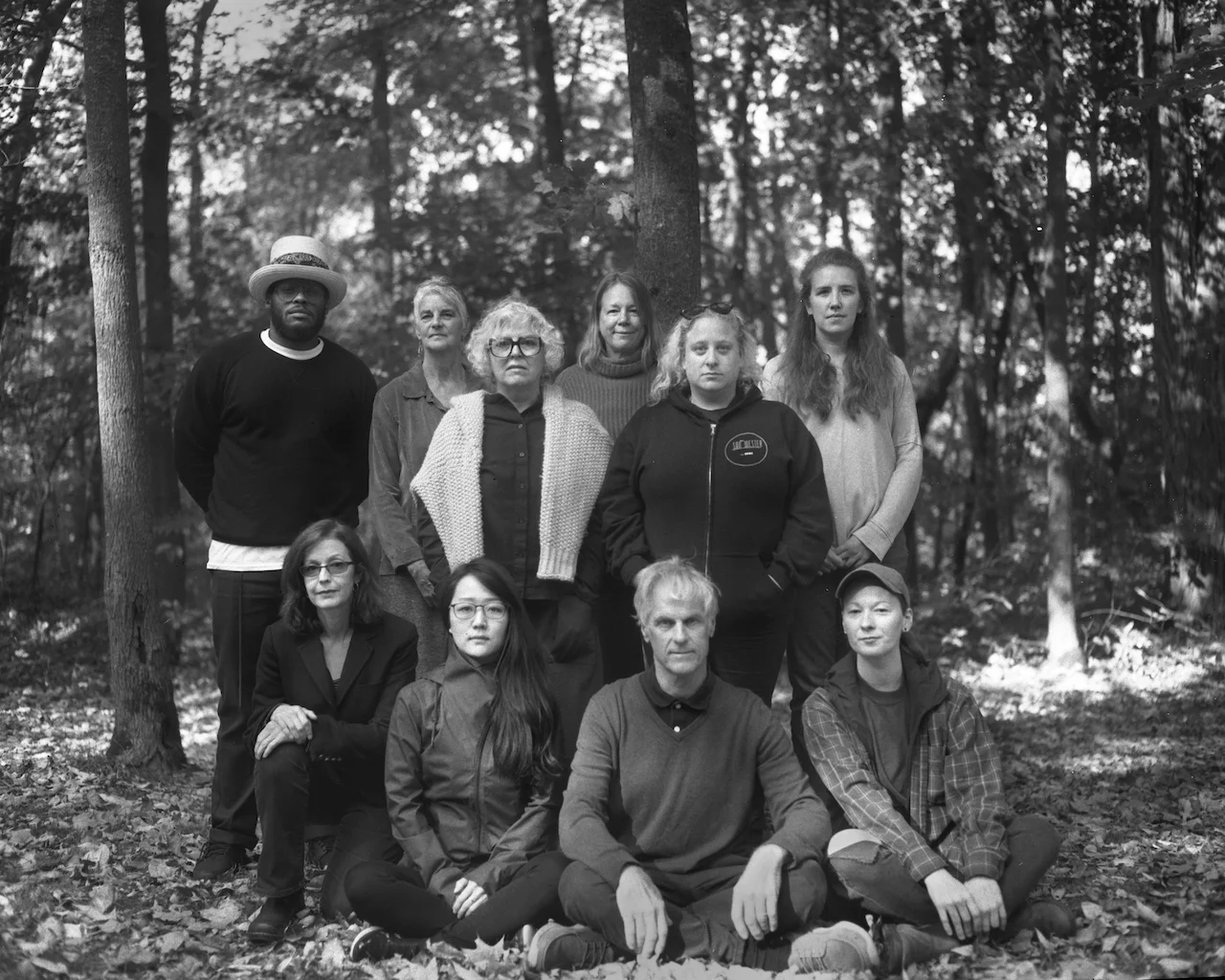The imagery I drew on for the woodcut depicted the recently built sculpture, a slate floor that I designed and laid for our host, and a bird's eye view of the surrounding islands. Bordering the three scenes was a pattern adapted from a rug in the cottage where we stayed. The print extended my relationship to the land art beyond the time I spent making it. And it was a purely personal artwork produced in a manner that harkened back to my earliest artistic strivings. Sometimes the best direction forward is discovered by going back.
Read MoreMaybe it comes from experience, or maybe it is innate, but I do have a nose for stone. Time and again I stumble upon obscure sources of loose stone if I just start wandering around. The talent, if it can be called that, extends to moments during the walling day when a particularly sized and shaped stone is required for a spot on the wall. Without it being in sight, I will ferret into a stock pile to immediately come up with the hidden gem, waiting just below the surface.
Read MoreOver the years, experience taught me that not all my ideas work, but that the most risky ones, when they did, turned out to be the most rewarding. If I wanted the Odeon to be something special, I had to have faith. Architectural details from the church have informed the Odeon’s design. A seating arrangement of granite slabs, their surfaces speckled with iridescent mica like the church’s facade, are set atop retaining walls built in a matrix style that emulates that of faceted, stained-glass windows.
Read MoreSince I’ve only been on the receiving end of interview questions I don’t know how they’re properly crafted but I can tell when they have been. A good interviewer opens a door and asks the subject to step into their own world. I was pleased to be asked by Tom Christopher to be interviewed for his podcast Growing Greener.
If the rock scramble and stone sculpture I recently constructed for East End Park in Woodstock, Vermont looks a little like it could have been the result of coincidental events visited on the landscape, then I’ve succeeded in realizing my dream for it.
Read MoreThis year, Rokeby Museum announced the launch of a new partnership with Kasini House designed to engage contemporary artists as interpreters of the museum’s unique history. Ric Kasini Kadour, Curator and Project Director of Contemporary Art at Rokeby Museum, invited the artist team of Dan Snow Stoneworks (Elin and Dan) to a series of workshops and discussions designed to foster the integration of history and contemporary art into an artist’s practice. We joined ten other artists from around the U.S. and Canada at the museum last month for four days of thought-provoking research and an exercise in project development.
Read MoreMovement is critical for getting into the moment, for being of a time and in a place. Perhaps the best thing an artist can offer a viewer is the chance to become a little more aware of themselves. Outdoor art spaces hold the potential for that to happen.
A recent special event at the Shelburne Museum drew a large crowd on a perfect summer evening. I was there to welcome visitors to Fantasy Topography, my temporary, environmental art installation in a pine grove on the grounds. It was great to see lots of people walking around and in the sculpture. Many thanks to those who stopped by to chat, and to the staff for all they do to make an enjoyable time for those attending the museum’s once-a-month, Free Friday.
Read MoreHaving landscaping and stonework done can be a geophysical boost to Earth’s well being in the long run but it’s not without short-term costs. Before the shovel goes in, here are some FAQs for a planet considering a surgical procedure.
Read MoreNavigating the process of a public art proposal feels like a long walk by flashlight through a snowstorm. Signs are unclear and paths become obscure along the way. Because the destination is not a geographically fixed point, there remain, at the conclusion of an artist’s unsuccessful bid to win a competition, questions about where they traveled, and why the trip dead-ended.
Read MoreUpon completion, the Bauble perched on its temporary base in the sugarhouse woodshed for three months while the adhesive that held it together cured.
Read MoreConditions being what they were of late with snow storm after snow storm, I stayed away from the stone project in-progress and gave myself a propertyless assignment. The premise was to compile a collection of photos that illustrate the work life of a solitary stoneworker; with myself as the subject and past projects as the source material.
Read MoreThe 2017 work year was a variety-pack of projects and travels bringing rocks and people together. Projects from 2017 now lie nestled in snow, while projects for 2018 are already underway.
Read MoreEnvironmental artworks in the public domain can quickly fall into the realm of personal legend. One of the best qualities of art in the outdoors is its ability to be endlessly personalized. Each new viewer makes it their own and every return visitor reestablishes their claim to it.
Read MoreA week on Sørvær in Northern Norway kept me immersed in the land and enveloped by the sea. The atmosphere of this island among islands is reigned by the sky above and waters below. Combined, they create an undeniably powerful influence. My moods changed at the whim of the weather. Even though I’ve spent my adult life working outdoors I’m unconditioned to the reality of light reflected from a vast and shifting water surface, or, tides streaming in and out all around. Grasping the totality of the archipelago's grand and sweeping vistas was a heady experience.
Read MoreWhat could be a more direct expression of form than molding earth in one’s hands? While the modes of earth shaping may vary, the impulse is ages old and remains strong as ever. My personal choice for satisfying the desire for hands-on interpretation of the earthly elements is the manipulation and configuration of loose stone. Within that narrow frame a wide variety of creative endeavors can be manifest.
Read MoreEnvironmental art serves a wider community. It can prosper plants and animals as well as humans. Art making in nature stirs the pot of local ingredients, recombining elements in ways previously untested. Wild things are opportunists; it’s programed into their DNA for survival. When something new appears in the landscape, ecologies respond. An environmental art work is breeding ground for creative adaptation. Its ultimate use is left up to the invention of its inhabitants.
Read MoreMy classmate, Hass, and I were standing on a rooftop on the lower west side of Manhattan watching a dance performance taking place in a vacant lot across the street when he nudged me and whispered, “That’s Robert Smithson.” The tall guy to my left at the parapet, in a cowboy hat and black trench coat, was solemnly staring down at the ground, along with a couple dozen other bohemes of the downtown art scene who had climbed four flights of rickety stairs in a derelict, cheese warehouse to view the show.
Read MoreDuring the month of May, a 22 meter long sculpture surfaced on the quad at Landmark College in Putney, Vermont. The dorsal fin of the granite and earth construction rises 2 meters above the MacFarlane Science, Technology & Innovation Center lawn. Once the cover plants are established on the earthen swells of the shark body, the piece will become an inviting land feature for students and faculty to congregate for outdoor classes and conversation.
Read More
















